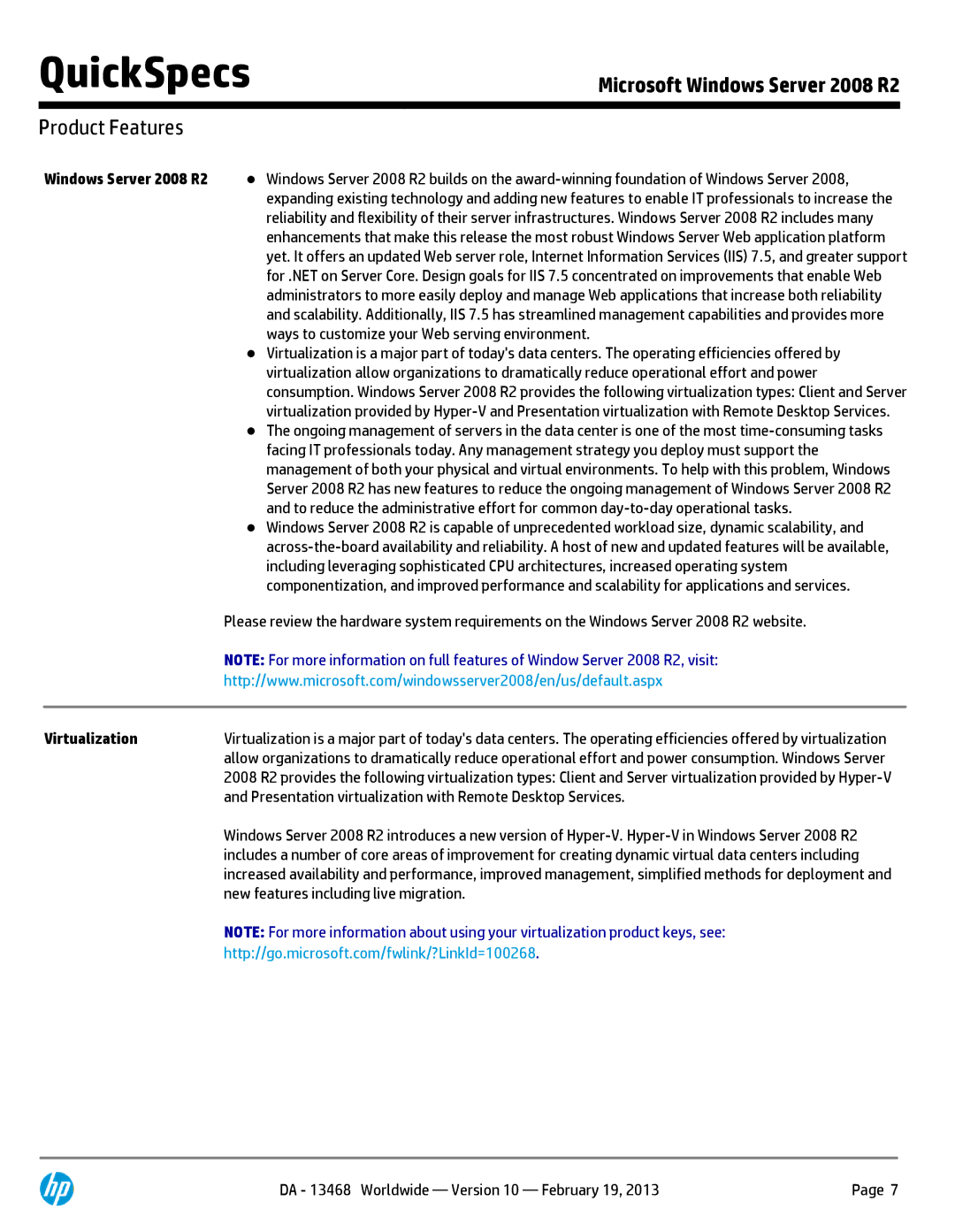Microsoft Windows Server 2008 R2 Standard Edition 589256-B21 specifications
HP Microsoft Windows Server 2008 R2 Standard Edition 589256-B21 is a robust server operating system designed to cater to the demands of enterprise-level applications and services. As a member of the Windows Server family, this edition builds on the foundation of its predecessor, offering improved performance, enhanced security, and a plethora of features that streamline server management.One of the standout features of Windows Server 2008 R2 is its utilization of the advanced Windows 7 code base. This results in greater stability and efficiency, as well as a familiar interface for users. The operating system integrates well with existing Windows environments, ensuring smooth transitions for organizations upgrading from earlier versions.
Windows Server 2008 R2 Standard Edition supports up to 64 processing threads and provides substantial performance improvements through its enhanced support for multicore processors. This capability is crucial for businesses that require high levels of processing power to handle demanding applications. The system also supports up to 1TB of RAM, significantly expanding the potential for memory-intensive applications.
This edition offers the popular Hyper-V technology, a powerful virtualization platform that enables businesses to run multiple operating systems on a single server. Virtualization not only optimizes resource utilization but also enhances server deployment flexibility and disaster recovery options.
Security is another cornerstone of Windows Server 2008 R2. The operating system includes an updated version of Windows Firewall, enhanced BitLocker Drive Encryption, and policies for user access. These features work together to safeguard sensitive data and maintain regulatory compliance, crucial for organizations operating in industries with stringent data protection requirements.
The inclusion of Server Manager simplifies the administration of roles and features, making it easier for IT professionals to manage server resources effectively. Additionally, the Active Directory enhancements in this edition streamline user management, delegation, and authentication processes.
Windows Server 2008 R2 Standard Edition also introduces Remote Desktop Services, allowing users to access their desktops and applications from anywhere. This capability supports the growing trend of remote work, enabling organizations to maintain productivity outside traditional office environments.
In summary, HP Microsoft Windows Server 2008 R2 Standard Edition 589256-B21 serves as a powerful solution for businesses that require a reliable, secure, and efficient server operating system. With advanced virtualization capabilities, robust security features, and a user-friendly management interface, it provides a strong foundation for enterprise-level IT infrastructure.

